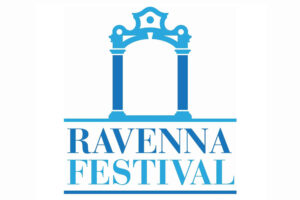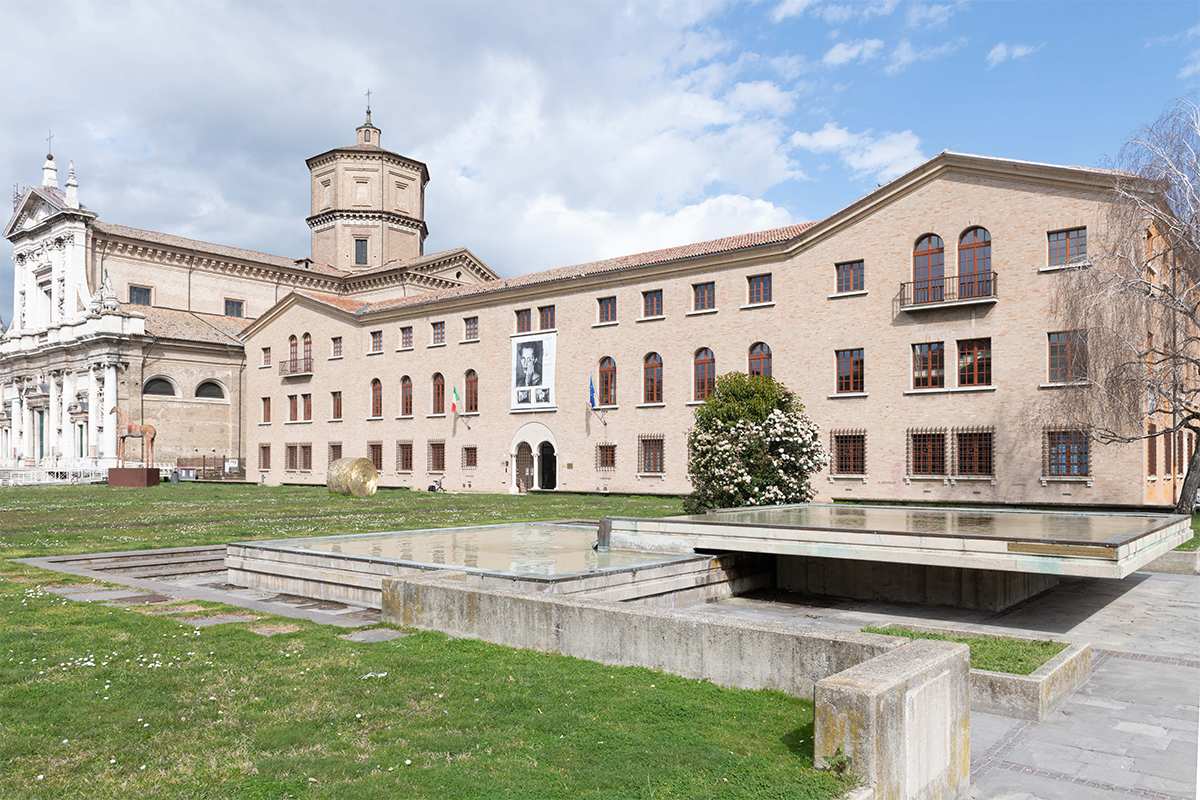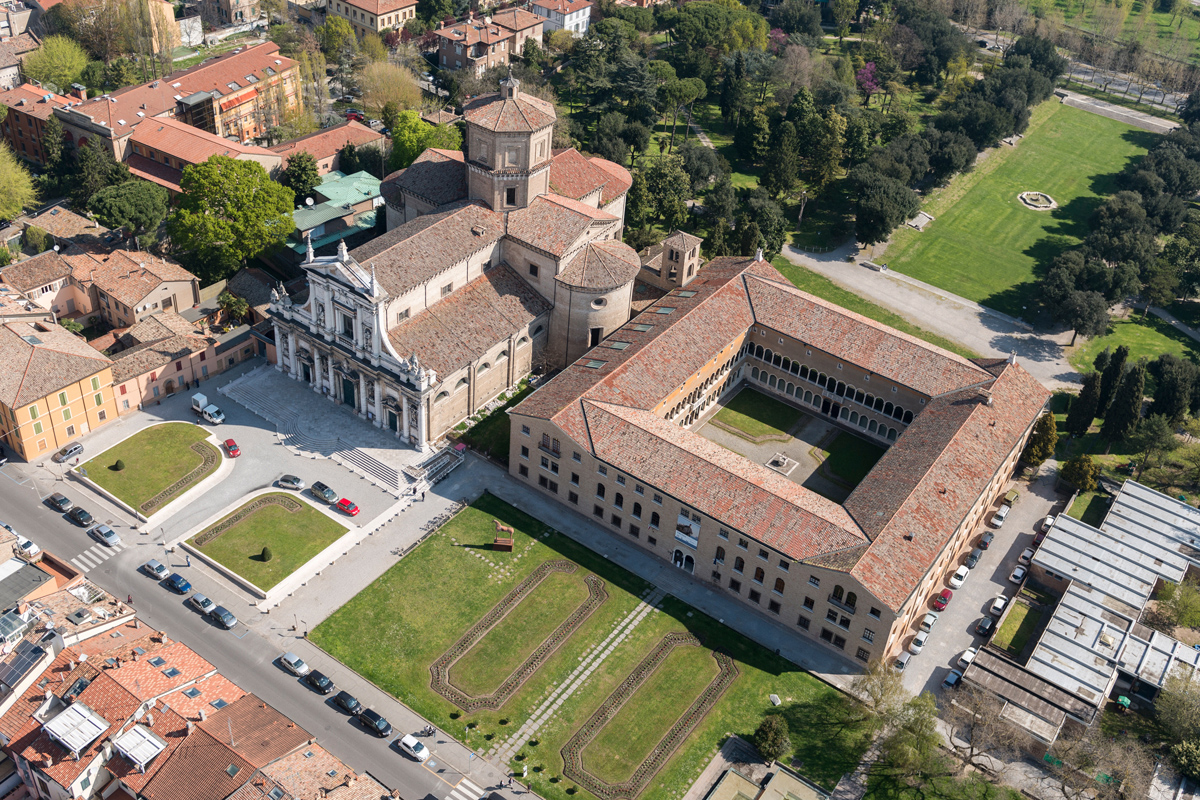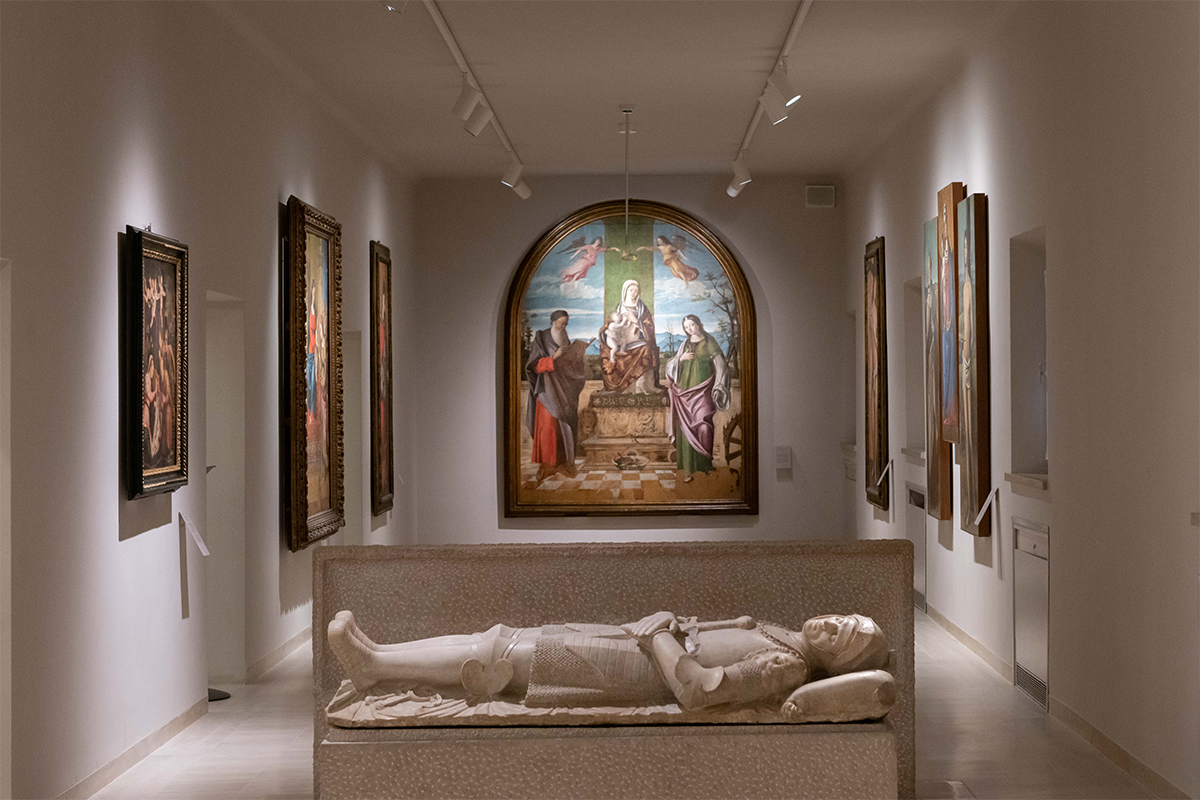Art lovers cannot miss a visit to the MAR – RAVENNA ART MUSEUM.
With exhibitions, festivals, educational laboratories and a collection of modern and ancient art, this museum is one of the beating hearts of the city’s cultural life.
The MAR, once called Pinacoteca Comunale (municipal art gallery), became an official museum institution in 2002, relaunching the city’s cultural and activities alongside important conservation and research initiatives, such as the International Mosaic Documentation Centre (CIDM), as well as significant temporary exhibitions.
The museum is located in the area of the Public Gardens, in the 16th-century monastery known as Loggetta Lombardesca, which was once part of the adjacent abbey of Santa Maria in Porto.
From Napoleon’s invasions onwards, this building served different purposes, until the restoration works carried out in the ’70s.
Today, we can still see the original structure and rooms, and the elegant loggia with five arches, which has become the symbol of the museum’s architecture.
The Art gallery – from the 14th to the 21st century
The museum hosts more than 300 paintings and sculptures that cover a time span between the 16th and the 19th century, as well as a large collection of small-size boards datable between the 14th and 15th century.
This is the first nucleus of works that opened the way for the civic art gallery in Ravenna in 1892.
This incredible treasure was enriched over the years thanks to private donations.
The gravestone of Guidarello Guidarelli (focus), made by Tullio Lombardo in 1525, is a very important piece of the museum.
Giorgio Vasari’s painting Lamentation over Christ Deposed from the Cross (1548), commissioned by the Monastery of Classe, is of fundamental importance, as well as the great canvas of St. Romuald by Guercino, magnificent for its colours and composition.
Thanks to the recent rearrangement, the art gallery is also open to modernity. You will thus find neoclassical landscapes by Giambattista Bassi, examples of Tuscan purism by Antonio Ciseri and symbolist works by Vittorio Guaccimanni and Domenico Baccarini.
The contemporary collection features a female nude by Gustav Klimt, whereas the second half of the 20th century is documented by the most important names of Roman Pop Art, such as Mario Schifano and Tano Festa, as well as by the the great names of Abstract art, such as Luigi Veronesi, Alighiero Boetti, Dadamaino, Olivieri, Castellani, Griffa, Mondino, Cattelan and Banksy.
The collection is dynamic and always open to new acquisitions and works that continuously enrich the exhibition.
Modern and contemporary mosaics
Thanks to scholar Giuseppe Bovini – who donated the original nucleus with the aim of highlighting the refined technique of the mosaic artists from Ravenna adjusting it to the spirit of contemporary painting – the museum also hosts a charming collection of contemporary mosaics.
The exhibition displays names of the likes of Guttuso, Capogrossi, Vedova and Chagall, entrusted in 1951 to draw the sketches of future mosaic works.
The collection, featuring a brand-new and fascinating rearrangement inaugurated in May 2023, is constantly enhanced with new works, which, even though they are made of mosaics, go beyond the traditional techniques.
Arts & New Media Room
Since December 2024 there has been a new room inside the museum, the Arts & New Media Room, a place for sharing and participation, but above all a space that offers the public an alternative point of view in viewing the works of art, representing the innovative and experimental soul of the museum.
This new space will periodically host cultural events, environmental installations, artistic residencies, workshops, training sessions with experts and exhibition cycles such as the Spazio Neutro project, conceived and directed by Giorgia Salerno, curator and curator of the museum’s collections.









